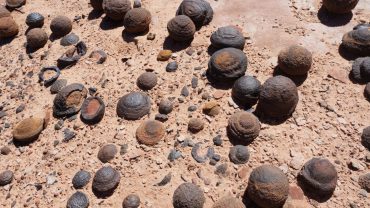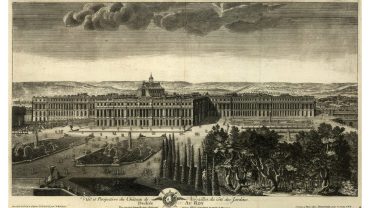Montezuma’s treasure is said to have disappeared in one night. A dark event fogged by chaos, death and destruction known as the Night of Sorrows. It has since taken on a mythical quality, with tales of unimaginable riches and vastly differing claims as to its location. But are any of the stories true? Just where is the treasure of Montezuma?
Montezuma’s Lost Treasure

Aztec coin laying in sand. (Photo: breakermaximus via iStock)
Emperor Montezuma II (Moctezuma) was the ninth and last great Aztec emperor of the land known today known as Mexico. Along with a vast empire, Montezuma was said to have enormous wealth. Indeed, the treasure of Montezuma is the stuff of legend.
Nobody knows exactly what this treasure comprised, although accounts tell of gold, silver, jewels and gems beyond comprehension. Some say there were rooms full of riches, wealth amounting to billions in today’s currency.
Very little is known of Montezuma’s reign or his fate. Almost all records of this time were destroyed by Spanish invaders along with the city of Tenochtitlan. In the aftermath of the invasion, most of the history was written by the victors.
European Invasion

A temple of the Mexica peoples in their capital city of Tenochtitlan, which is now Mexico City (Photo: Prakich via iStock)
In November 1519, Montezuma welcomed Spanish conquistador Hernán Cortés and his army into the Aztec city of Tenochtitlan, now Mexico City. Writing from the time tells of the Conquistadors’ awe at the magnificent city.
Some say that the Aztecs believed Cortés to be a deity, although this is disputed. Montezuma did lavish the newcomers with gifts, possibly in an attempt to appease them, possibly through generosity. Whatever the reason, it is said this only fuelled the invaders’ greed for more. Cortés, meanwhile, had made alliances with local tribes resentful of their Aztec rulers.
Within a week of Spanish arrival, Montezuma himself had been taken captive, becoming a puppet through whom Cortés’ ruled. At some point during this time, Montezuma was killed. However, even this is disputed, with the Spanish claiming he was stoned to death by his own people.
Between May and June 1520, events fell apart for the Conquistadors when Cortes was called away from Tenochtitlan. Accounts are mixed, but the prevailing story is that the lieutenant left in charge had massacred Aztec nobles during a celebration, inciting all out war. Cortés’ returned on 24 June 1520 to find his army under siege.
La Noche Triste

Aerial view of Lake Texcoco near Mexico City (Photo: izanbar via iStock)
The night of 30 June 1520 is crucial in the story of Montezuma’s lost treasure. Cortés and his men fled Tenochtitlan under cover of darkness, taking with them vast quantities of treasure, some weighed down by gold and silver. When the Aztecs found out, they attacked, killing hundreds of Spanish soldiers. The Spanish call that night La Noche Triste, meaning The Night of Sorrow.
It was in this chaos that most of Montezuma’s treasure was lost. It is generally thought that much of the treasure ended up at the bottom of Lake Texcoco. Whether it was sunk along with a Spanish ship or dumped there by panicking soldiers is unclear.
In April 1521, Cortés and his forces returned. The fierce battle that followed would raze Tenochtitlan to the ground.
Tracking Montezuma’s lost treasure

Aztec coin laying in sand. (Photo: breakermaximus via iStock)
Over the centuries that followed, many have searched Lake Texcoco for Montezuma’s treasure, but with no success.
Some theories say that Montezuma’s treasure was taken north as far as Utah. It’s said that thousands of treasure-laden Aztec warriors snuck out of Montezuma’s Palace before Cortés returned in 1521. Montezuma’s body would also have been taken.
Montezuma Treasure Found?

Close up view of an Aztec Calendar. (Photo: alessandro0770 via iStock)
In 2019, there was an exciting development in the search for the treasure. Tests on a bar of gold weighing 4.25 lbs that had been found in 1981 confirmed it to be part of Montezuma’s treasure. It had been uncovered by a workman during the construction of a bank in Mexico City. The location would have been along Cortés’ route out of Tenochtitlán. It was seen as evidence that the treasure never left Mexico.
One Bar, no Treasure

Aztec coin laying in sand. (Photo: breakermaximus via iStock)
Montezuma’s treasure may remain lost, but the 2019 revelation of one recovered bar of gold provided hope to those looking for it. There will always be those seeking the fabled riches of the Aztecs, lured by the stories passed down the generations.












